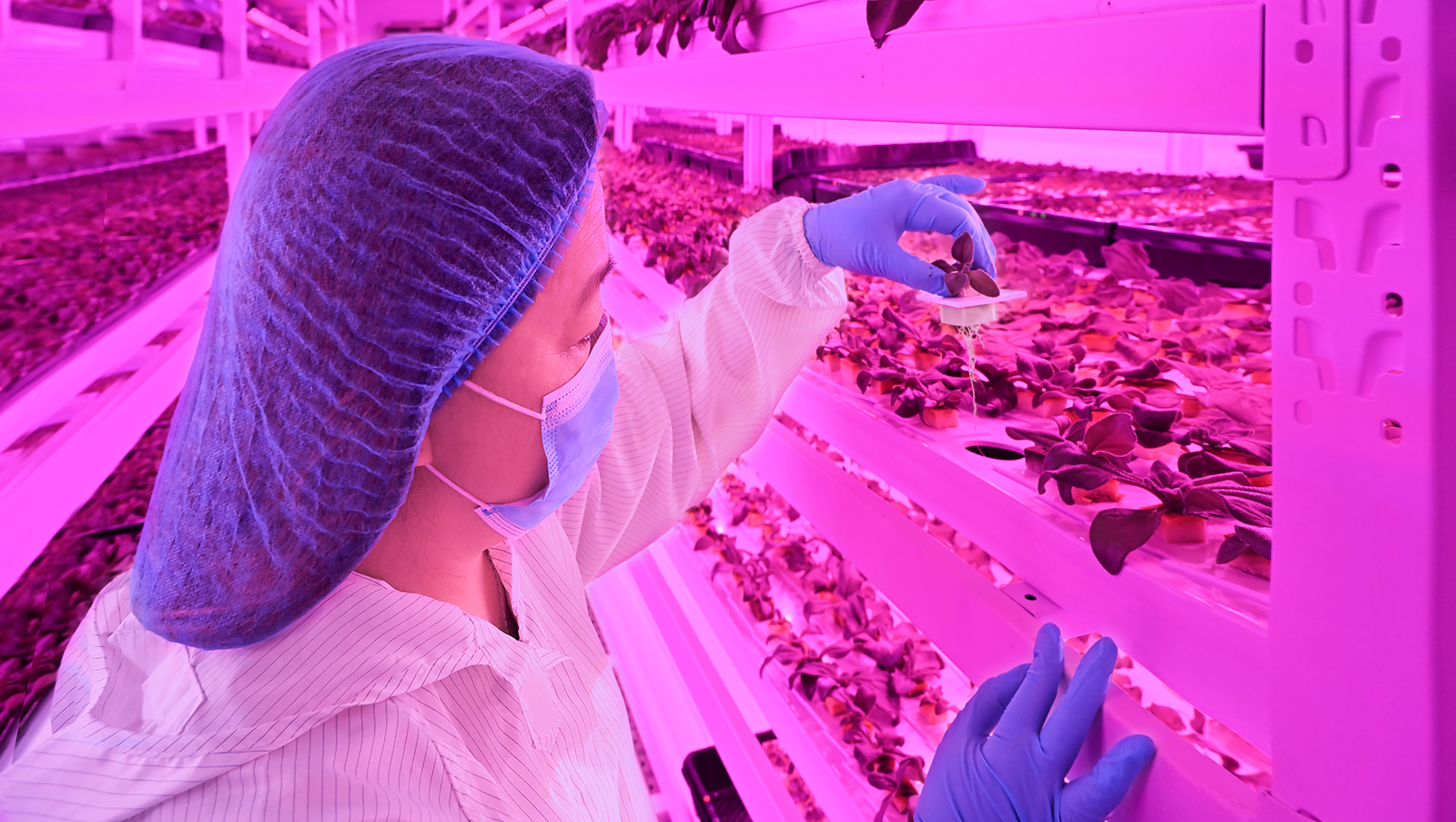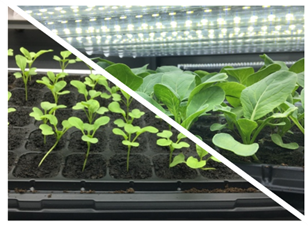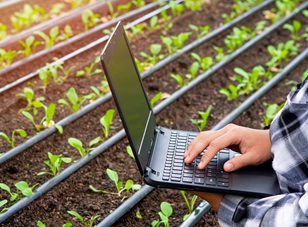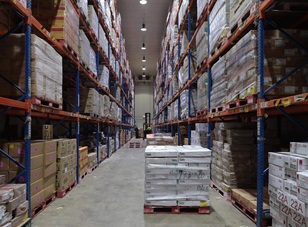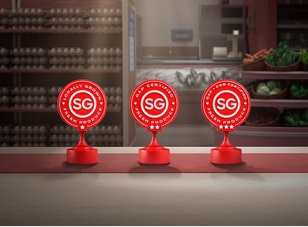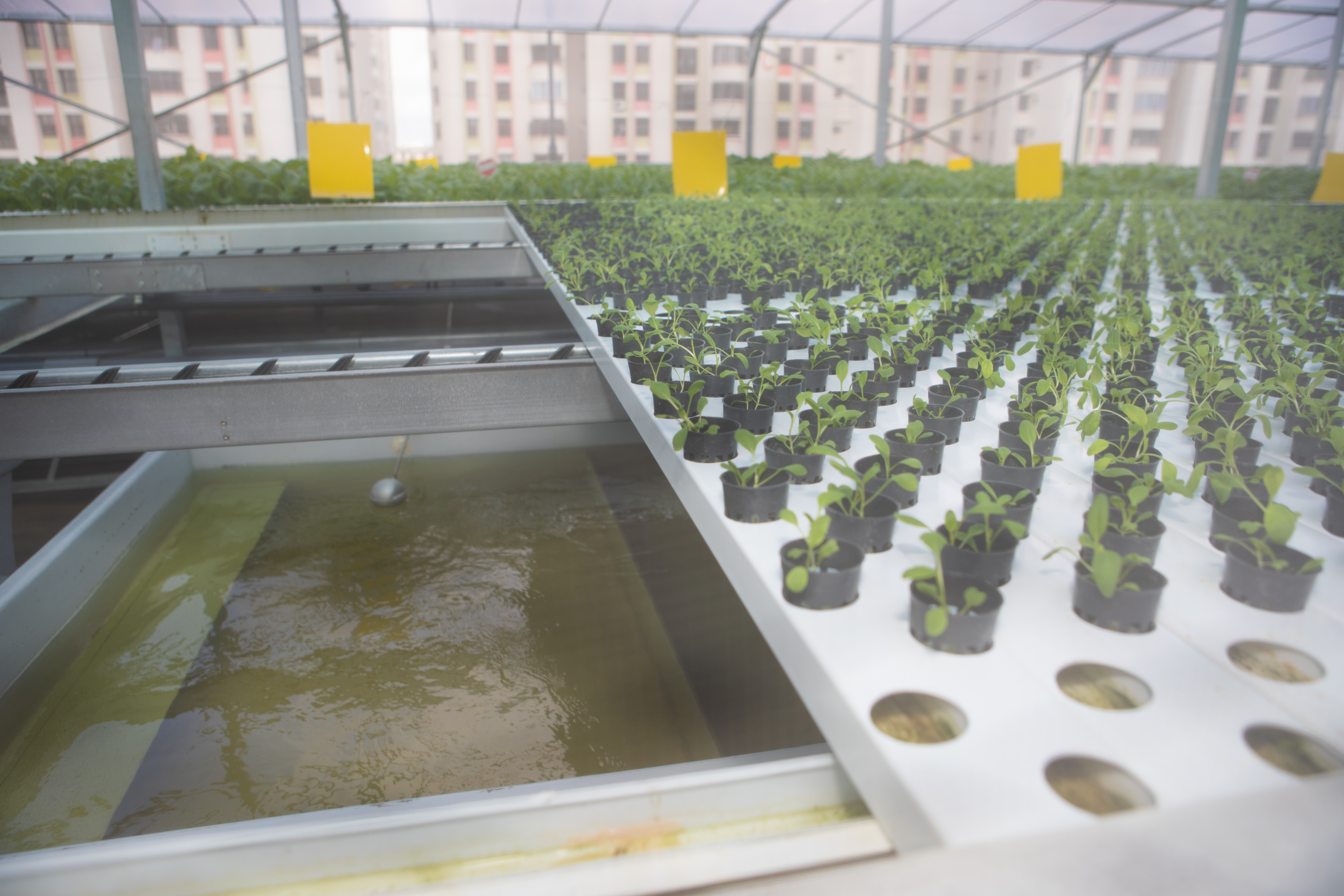
Hydroponics, a high-tech farming method that allows plants to be grown in soilless substrates, hold much potential in strengthening Singapore’s food security as the nation looks to produce more of its own food, with less.
Singapore today imports more than 90 per cent of its food. However, climate change, extreme weather conditions, and a growing global population are increasingly impacting global supply chains and food production, presenting threats of disruptions to Singapore’s food supply.
To mitigate the impact of supply disruptions, Singapore has been diversifying its import sources, as well as transforming the local agri-industry to grow more with less. The Singapore Food Agency (SFA) embarked on the ’30 by 30’ goal, which aims to build up the capability and capacity of our agri-food industry to produce 30 per cent of our nutritional needs sustainably by 2030. Yet, with limited land and other resources, the challenge is on for Singapore to grow its food in a resource-efficient and sustainable manner.
As such, a critical component to achieving this goal is the use of technology that will allow Singapore to increase its production output with existing resources. In the case of vegetables, hydroponics is one of the available agri-tech which helps to speed up the growing cycle of our homegrown crops without compromising on nutritional value.
The Myths about Hydroponics

Hydroponics is a smart farming technique to meet future food demand in a sustainable way. However, people around me have sometimes expressed doubts towards the technology. Yet, after hearing them out, these often turn out to be common misperceptions, or myths, that science has proven otherwise. Here are some of them:
Myth #1 – It is expensive and difficult to implement
This is one of the most common myths about hydroponics. People often think that a lot of money is needed for equipment and supplies to start growing with hydroponics. However, this isn’t true!
In fact, as the use of hydroponics becomes more widespread, such systems have also become more affordable. Today, there is a vast variety of affordable options available for beginners who want to try hydroponics at home. A complete kit with everything needed for a basic hydroponic system can be easily purchased for less than $100.
As for commercial farmers looking at using hydroponic systems, there is a wide array of systems available. These are scalable, assure good production, and come with a range of automated control systems, giving the farmer the flexibility on what and how to grow their crops.
Hydroponics ensure more predictable outcomes in taste and harvest, as farmers are able to control the crop growing environment, such as temperature, humidity, airflow, CO2 levels to produce the desired taste and texture profiles, which helps to translate to increased profitability and consumer satisfaction.
Furthermore, there are also numerous government support and grants available to help existing farmers incorporate high-tech farming practices into their farms, as well as help new farmers embark on high-tech farming ventures. This includes the recently enhanced Agri-food Cluster Transformation Fund that supports local farms in embarking on transformation projects.
#2 – It relies on chemicals and is not organic
While hydroponics use minerals essential for plant growth, these are also found in conventional soil-based farming. The only difference is that absorbing nutrients from water, as is done in hydroponics, is faster and easier for plants.
In fact, we should not be afraid of chemicals as they are an integral part of our everyday life. Even the salt, sugar, and water that we consume are essentially chemicals.
Did you know? Plants are known to obtain 3 nutrients from the air – carbon, hydrogen, and oxygen - and 13 nutrients from supplemented water or in the case of hydroponics, the nutrient solution – nitrogenM, phosphorous, potassium, calcium, magnesium, sulphur, iron, manganese, copper, zinc, boron, chlorine, and molybdate. These are used at minimal concentrations and have no toxicity effects on human beings! The chemicals in hydroponic nutrients are not ingested directly by the consumer but are absorbed by the plants for conversion into plant nutrients, which would then meet our nutritional requirements when consumed. |
#3 – Hydroponically-grown plants are less nutritious
Far from being less nutritious, the nutrition level in hydroponically-grown plants is on par, or can be even more nutritious than conventional soil-grown plants. According to a Scientia Horticulturae research article comparing between soil and hydroponics systems, it was discovered that tomatoes grown hydroponically using Nutrient Film Technique (NFT) have more vitamin C than tomatoes grown using soil. One of the main reasons for this is that the farmer has complete control over the plant’s nutrient recipe. The farmer can tailor the water and nutrient mix to meet the specific needs of the plant species to produce crops that are healthier and more nutrient dense.
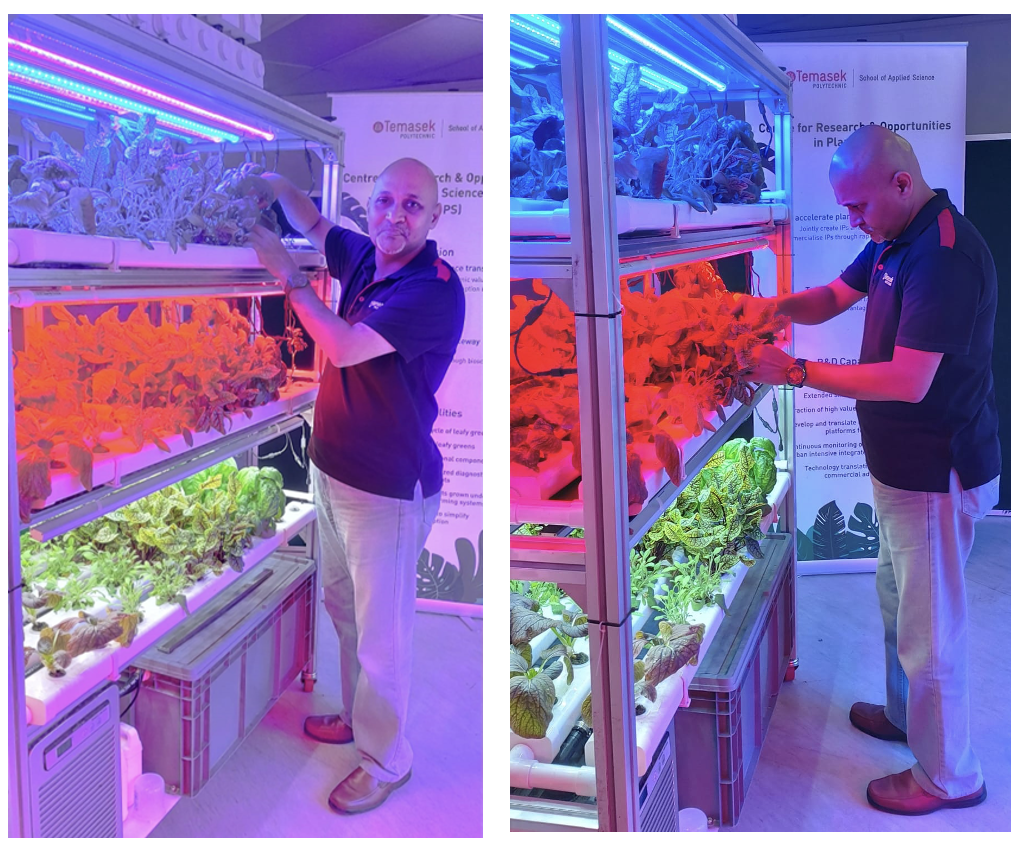 Dr. Mandar Godge evaluating the growth of leafy vegetables in hydroponics systems at Temasek Polytechnic.
Dr. Mandar Godge evaluating the growth of leafy vegetables in hydroponics systems at Temasek Polytechnic.
The Potential of Hydroponics
There is a myriad of ways that hydroponics can contribute to enhancing Singapore’s food security under the ‘30 by 30’ goal.
In hydroponics, there is a complete elimination of soil and its harmful micro-organisms, thereby allowing us to grow better quality crops, while reducing environmental impact such as soil erosion or water supply contamination. Moreover, controlled environment hydroponics using soilless substrates reduces the exposure of the crops to pests and diseases, which in turn radically decreases pesticide use and the resultant environmental impact. Hydroponics is also deemed a more resource-efficient method of farming as the recirculatory closed-loop system allows for the reuse of nutrients and water resources.
As the predominant soilless farming technique used in urban farming today, hydroponic systems ensure faster, higher and more space efficient crop production anywhere by utilising less resources under a controlled growing environment (light, temperature, humidity, and airflow) throughout the year.
Stellar Local Examples of Hydroponics Farms Hydroponics farming in Singapore is gaining traction. Here are two examples of farms that have embraced hydroponics, and the positive results they have achieved. Sustenir
Sustenir's indoor farm using controlled environment hydroponics. Founded in 2014, Sustenir taps on hydroponics and indoor farming techniques to produce over 90 tonnes of crops annually. Crops grown by the farm include plants that are not normally expected to thrive in Singapore, such as ice plants, lettuce and Curly and Tuscan kale. In addition to helping meet Singapore’s nutritional needs, Sustenir also grows its crops with sustainability in mind. Their Nutrient Film Technique enables them to recirculate water resources, resulting in 95% less water usage than a traditional farm. As testament to the taste and quality of their hydroponically-grown products, customers have rated their produce as fresh, tasty and crunchy – qualities that Sustenir attributes to their farming system, which allows them to tweak the taste of the produce during the early stages of growing. ComCrop ComCrop, which uses NFT hydroponics method to grow their vegetables. First established in 2011, the island’s first-ever commercial rooftop farm relies on advanced hydroponics technology to nurture their bounty of pesticide-free herbs and vegetables. As a rooftop farm, ComCrop employs a hybrid model of urban agriculture that balances both cost and efficiency. Co-owner and CEO Peter Barber explains: “As a hybrid farm, we’ve been able to embrace modern indoor farming technology in combination with a cost-effective environment.” Today, the company supplies fresh ingredients – such as Japanese Caixin, lettuce, basil, and mint – to both restaurants as well as households. Their products are consistently well reviewed by customers, who are amazed that local farms can produce crops of such high quality. For example, consumers have commented on their large basil leaves – possibly a reflection of the effective and nutritious high-tech hydroponic farming technique that ComCrop employs. |
Hydroponics: Try it, taste it
As we have seen, the use of farm technologies such as hydroponics can make a difference in enhancing Singapore’s food security. For farmers, hydroponics can ensure more predictable outcomes in taste and harvest. This translates to cost-effective, quality-assured products that can be sustainability grown in the long run.
Hydroponics is just one of the many forms of technologies and innovation, which function as key enablers for farms to grow and expand their production. By adopting technology and smart farming features, we can build the capacity and capability of our agri-food industry to strengthen Singapore’s food security.

Everyone can play a part in improving our nation’s food security by buying Singapore-grown produce. Such produce can be identified through the recently launched SG Fresh Produce badges. Look out for the 1-star, 2-star and 3-star badges, which denote their local origins, production quality, and sustainable practices.
About the Author
Dr Mandar Godge is the lead scientist and consultant of Agritech at Temasek Polytechnic. His research work focuses on sustainable technology development for urban agriculture, and translating his research findings towards sustainable farm production practices, crop improvement and technology-agnostic guidance for farmers.


